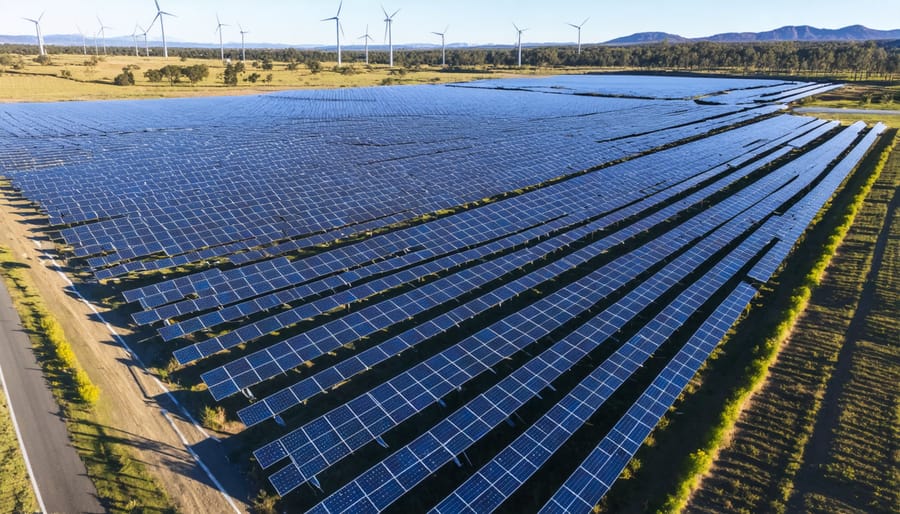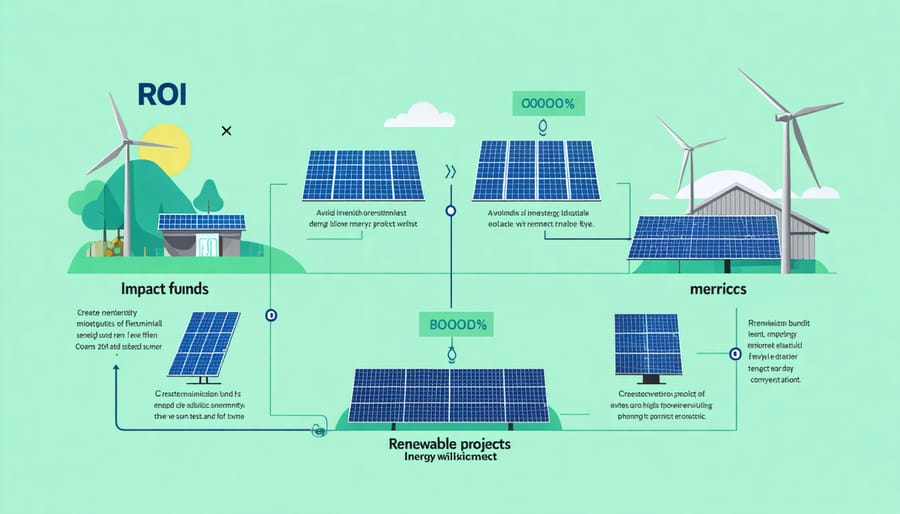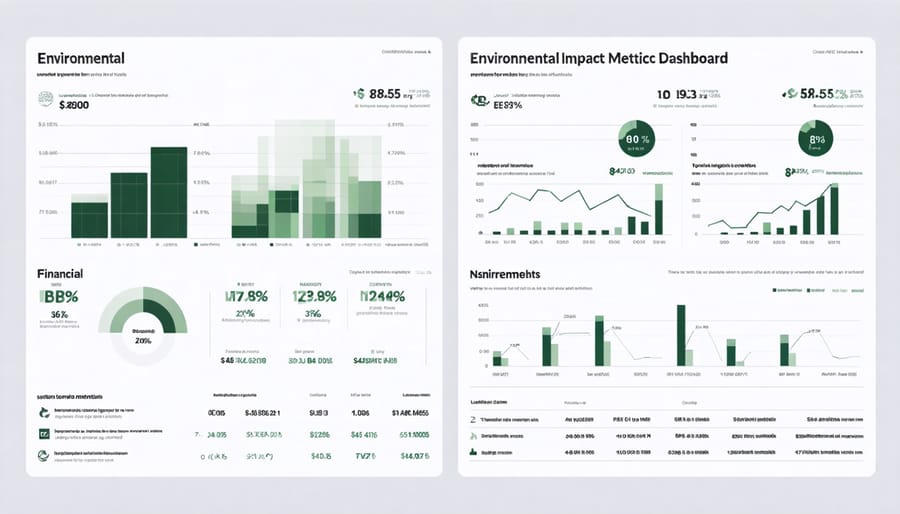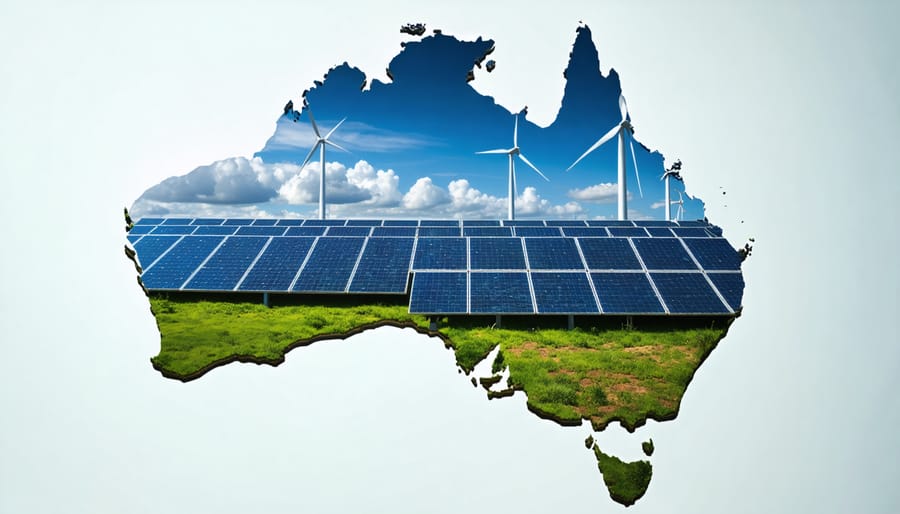In the wake of unprecedented climate challenges, sustainable impact investing has emerged as a powerful force transforming both financial markets and environmental outcomes. Today’s investors aren’t just seeking returns; they’re demanding their capital creates measurable positive change for our planet and communities.
With global sustainable investments surpassing $35 trillion in 2020, this investment approach has moved from the margins to the mainstream of financial strategy. Australian investors, in particular, are leading this charge, with sustainable investments growing by 25% annually over the past three years.
Impact investing uniquely combines the rigour of traditional financial analysis with transparent environmental and social metrics. Whether funding renewable energy projects in regional communities or supporting innovative climate technologies, these investments are reshaping Australia’s economic landscape while tackling our most pressing environmental challenges.
For fund managers and institutional investors, this represents more than an ethical choice – it’s a strategic imperative. As regulatory frameworks evolve and climate risks intensify, sustainable impact investing offers both competitive returns and future-proofed portfolio resilience. The question is no longer whether to invest sustainably, but how to maximize impact while maintaining strong financial performance.
The Rise of Green Energy Investment in Australia

Market Growth and Opportunities
The sustainable impact investing market in Australia has experienced remarkable growth, with projections indicating a continued upward trajectory through 2025. This expansion is particularly evident in the renewable energy sector, where small investors in renewable energy are driving significant change. Recent market analysis shows a 40% year-over-year increase in sustainable investment allocations, with solar and wind projects leading the charge.
Emerging opportunities in sustainable impact investing span across various sectors, from large-scale utility projects to community-based initiatives. The Australian government’s commitment to reaching net-zero emissions has created a fertile ground for investors, with new incentives and policy frameworks supporting green investments. Innovative financing models, including green bonds and sustainability-linked loans, are making it easier for investors of all sizes to participate in the market.
The sector’s resilience during economic downturns has caught the attention of institutional investors, leading to increased capital allocation in sustainable projects. With technological advancements reducing implementation costs and improving efficiency, the return on investment for sustainable projects continues to improve, making them increasingly attractive to both individual and institutional investors.
Key Players and Success Stories
Australia’s sustainable impact investing landscape has witnessed remarkable success stories, with several key players leading the charge. The Clean Energy Finance Corporation (CEFC) stands out as a pioneering force, having mobilized over $10 billion in investments across renewable energy projects nationwide. Their flagship solar farm initiative in Queensland has not only generated consistent returns but also powers over 50,000 homes with clean energy.
Impact Investment Group has demonstrated impressive results through their Solar Asset Fund, achieving both environmental benefits and financial returns exceeding 10% annually. Their innovative approach to community-powered green energy projects has transformed regional communities while delivering steady returns to investors.
Australian Ethical Investment has emerged as another success story, with their renewable energy portfolio growing by 45% in the past three years. Their strategic investments in wind farms across South Australia have created hundreds of local jobs while contributing significantly to the state’s renewable energy targets.
These success stories highlight how impact investing can deliver both substantial environmental benefits and competitive financial returns, paving the way for a sustainable future while maintaining profitable investment portfolios.
Impact Investment Strategies for Sustainable Energy
Direct Project Investment
Direct project investment in renewable energy offers a compelling pathway for investors seeking tangible environmental impact alongside financial returns. In Australia’s rapidly evolving renewable energy landscape, investors can participate directly in solar farms, wind projects, and innovative bioenergy facilities that are transforming our energy infrastructure.
These investments typically involve acquiring equity stakes in specific renewable energy projects, often structured through power purchase agreements that provide stable, long-term revenue streams. Take the Moorabool Wind Farm in Victoria, for instance, where direct investors have helped create a facility that powers over 228,000 homes while generating consistent returns.
The beauty of direct project investment lies in its transparency and measurable impact. Investors can literally see their capital at work, whether it’s in the form of solar panels stretching across the Outback or wind turbines dotting the coastline. This hands-on approach allows for greater control over investment decisions and direct participation in project governance.
Success stories like the Kennedy Energy Park in Queensland demonstrate how direct investment can support innovative hybrid projects combining multiple renewable technologies. These projects not only deliver attractive returns but also contribute to Australia’s renewable energy targets and create local jobs.
For those considering direct project investment, key considerations include project development stage, technology reliability, and operational expertise of project partners. While initial capital requirements are typically higher than other investment options, the potential for both environmental impact and financial returns makes this an increasingly attractive option for impact-focused investors.
Remember, successful direct investment often requires patience, as projects may take several years to move from development to full operation. However, the long-term benefits of supporting Australia’s renewable energy transition while generating sustainable returns make this a worthwhile consideration for serious impact investors.
Fund-Based Investment Options
For investors looking to make a positive environmental impact while generating returns, several fund-based options have emerged in Australia’s sustainable investment landscape. Managed funds focused on renewable energy and sustainability offer a straightforward entry point, allowing investors to pool their resources with others who share similar environmental goals.
Exchange-traded funds (ETFs) specializing in clean energy and sustainable infrastructure have gained significant traction, providing investors with liquid exposure to a diversified portfolio of environmentally conscious companies. These funds typically include a mix of established renewable energy providers, innovative technology companies, and businesses demonstrating strong environmental stewardship.
Green mutual funds represent another popular vehicle, offering professional management and broader diversification across multiple sustainable sectors. These funds often combine investments in renewable energy projects with sustainability-linked bonds and other eco-friendly securities.
Impact investment funds have emerged as powerful tools for investors seeking direct involvement in environmental projects. These funds typically focus on specific areas such as solar farms, wind energy installations, or sustainable agriculture initiatives, providing detailed reporting on both financial returns and environmental outcomes.
For sophisticated investors, private equity and venture capital funds specializing in clean technology and renewable energy offer opportunities to support emerging technologies and scale-up projects. These funds often provide earlier-stage funding to innovative companies developing solutions for environmental challenges.
Many of these fund options now incorporate Australian-specific opportunities, allowing investors to support local initiatives while contributing to global sustainability goals. The growing variety of fund structures means investors can choose vehicles that align with their risk tolerance, investment horizon, and specific environmental interests.


Measuring Impact and Returns
Environmental Impact Metrics
Environmental impact metrics serve as crucial indicators for measuring and validating the success of sustainable investments. Leading indicators include carbon emissions reduction, measured in tonnes of CO2 equivalent avoided, which directly quantifies an investment’s contribution to climate change mitigation. Water conservation metrics track both consumption reduction and quality improvement, particularly relevant for Australia’s water-scarce regions.
Biodiversity impact scores evaluate how investments affect local ecosystems and native species, while waste reduction measurements track the decrease in landfill contributions and increased recycling rates. Renewable energy generation metrics, measured in megawatt-hours, demonstrate the concrete shift from fossil fuels to clean energy sources.
The emergence of standardised reporting frameworks, such as the Task Force on Climate-related Financial Disclosures (TCFD), has made it easier for investors to compare environmental performance across different projects. Smart technology and IoT sensors now enable real-time monitoring of these metrics, providing investors with immediate feedback on their impact.
Australian success stories include sustainable agriculture projects that have achieved 40% reductions in water usage while maintaining productivity, and solar farms that have exceeded their projected clean energy generation targets by 15%. These measurable outcomes not only validate environmental benefits but also demonstrate the financial viability of impact investments.
Forward-thinking organisations are now adopting integrated reporting approaches that combine environmental metrics with social and governance indicators, providing a holistic view of investment impact.
Financial Performance Indicators
Sustainable impact investments have consistently demonstrated their ability to deliver both financial returns and positive environmental outcomes. Recent data from the Responsible Investment Association Australasia shows that sustainable investment funds have outperformed traditional investments by an average of 3.5% over the past five years, challenging the misconception that environmental considerations compromise financial performance.
In the Australian market, renewable energy projects have emerged as particularly strong performers. Solar and wind investments have delivered average returns of 8-12% annually, while also creating lasting environmental benefits. Companies with strong environmental, social, and governance (ESG) practices have shown greater resilience during market downturns, with 87% of sustainable funds weathering the 2020 market volatility better than their conventional counterparts.
The financial success of impact investing extends beyond direct returns. Companies implementing sustainable practices often benefit from reduced operational costs, enhanced brand value, and improved stakeholder relationships. For instance, Australian corporations that have invested in renewable energy infrastructure have reported average energy cost savings of 25-30% over three years.
Risk-adjusted returns in sustainable portfolios have also proven competitive, with many green investments demonstrating lower volatility compared to traditional assets. This stability, combined with growing regulatory support and increasing consumer demand for sustainable products, positions impact investing as a financially sound strategy for long-term wealth creation while driving positive environmental change.
Future Outlook and Opportunities
Emerging Technologies
The landscape of sustainable technology is evolving rapidly, creating exciting new opportunities for impact investors. Green hydrogen production has emerged as a game-changer, with Australian projects like the Western Green Energy Hub leading the charge in zero-emission fuel development. These initiatives are attracting significant capital, with investors recognizing their potential to revolutionize heavy industry and transportation.
Battery storage technology is another frontier drawing substantial investment attention. Advanced grid-scale batteries are becoming increasingly cost-effective, with innovative solutions like flow batteries and solid-state technology promising longer duration storage and improved efficiency. The Hornsdale Power Reserve in South Australia has already demonstrated the commercial viability of large-scale battery storage, paving the way for similar projects nationwide.
Marine energy technologies are gaining traction, with wave and tidal power systems being tested along Australia’s vast coastline. These emerging technologies offer predictable and consistent renewable energy generation, complementing existing solar and wind infrastructure.
Artificial Intelligence and blockchain are revolutionizing how we manage and optimize renewable energy systems. Smart grid technologies enable better integration of renewable sources, while blockchain platforms facilitate peer-to-peer energy trading and transparent carbon credit tracking.
Carbon capture and storage (CCS) technologies are also advancing rapidly, with new methods for converting captured CO2 into useful products. These developments are particularly relevant for Australia’s industrial sector, offering promising pathways for reducing emissions while maintaining economic growth.
Policy and Market Developments
The Australian sustainable investment landscape has undergone significant transformation in recent years, driven by both policy reforms and market demands. The introduction of the Sustainable Finance Taxonomy in 2023 has provided investors with clearer guidelines for identifying genuinely sustainable investments, helping combat greenwashing concerns that previously plagued the industry.
Recent regulatory changes have introduced mandatory climate-related financial disclosures for large companies and financial institutions, creating greater transparency and accountability in the market. This shift has encouraged more organizations to integrate environmental, social, and governance (ESG) factors into their investment decisions.
The market has responded positively to these developments, with sustainable impact investments in Australia growing by 38% in 2022-2023. Institutional investors, particularly superannuation funds, have played a pivotal role in this growth, with many announcing ambitious net-zero targets and sustainable investment commitments.
State governments have also introduced incentives for sustainable investments, including tax benefits and grants for renewable energy projects. The New South Wales Government’s Renewable Energy Zones initiative has become a model for other states, attracting significant private investment in clean energy infrastructure.
Looking ahead, the proposed National Sustainable Finance Strategy is expected to further streamline sustainable investment practices and create new opportunities for impact investors. This comprehensive framework aims to position Australia as a leading sustainable finance hub in the Asia-Pacific region.
Sustainable impact investing represents a powerful pathway to create positive environmental change while generating attractive financial returns. Throughout this exploration, we’ve seen how this investment approach combines profit with purpose, delivering benefits for both investors and our planet’s future.
The Australian market offers particularly compelling opportunities in renewable energy, sustainable agriculture, and clean technology sectors. Success stories from leading sustainable funds have demonstrated that environmental consciousness and strong financial performance can go hand in hand, with many impact investments outperforming traditional portfolios over the long term.
As we look to the future, the momentum behind sustainable impact investing continues to grow. Climate change challenges and increasing environmental awareness are driving policy changes and market shifts that favor sustainable investments. For investors ready to take action, the time has never been better to align their portfolios with their values.
To get started, consider these key steps: research sustainable investment options that match your goals, consult with financial advisors who specialize in impact investing, and start small while learning the landscape. Remember that every dollar invested sustainably is a vote for the future we want to create.
By joining the sustainable impact investing movement, you’re not just building wealth – you’re helping build a more sustainable future for Australia and beyond. The opportunity to make a difference while making returns awaits those ready to take the first step.

